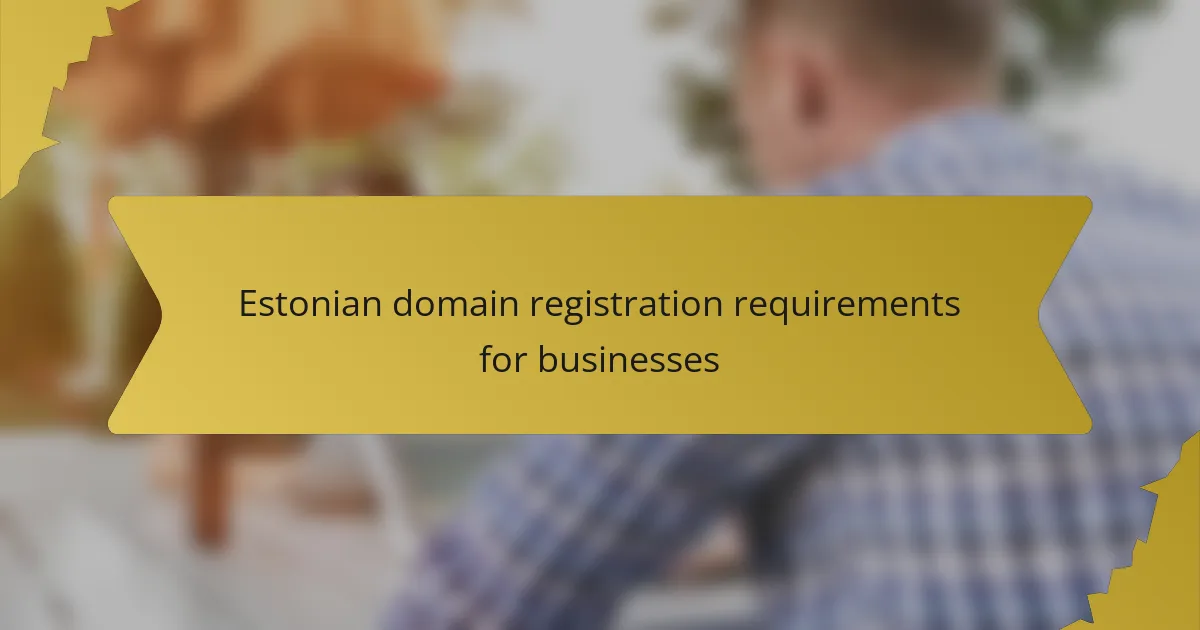To register an Estonian domain, businesses must have a registered company in Estonia and provide valid identification documents along with a local presence. The process involves selecting a registrar, checking domain availability, submitting necessary documents, and paying applicable fees, typically taking just a few days to complete.
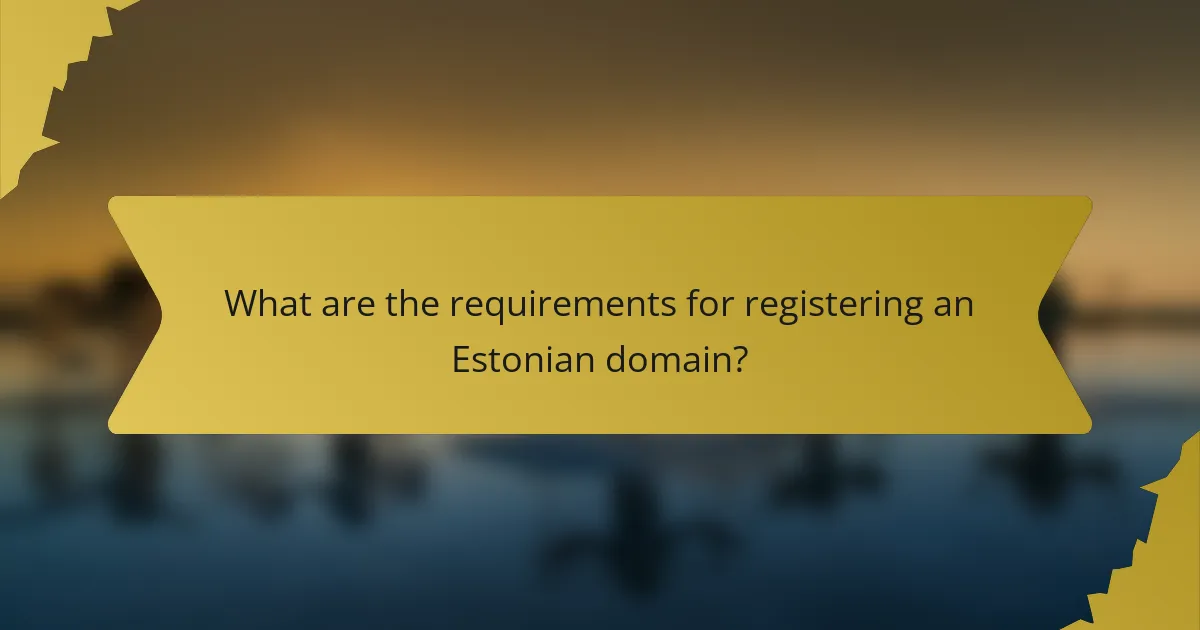
What are the requirements for registering an Estonian domain?
To register an Estonian domain, businesses must meet specific criteria including having a registered company in Estonia, valid identification documents, and a local presence. Additionally, checking domain name availability and paying registration fees are essential steps in the process.
Business registration in Estonia
Businesses must be officially registered in Estonia to obtain a domain. This involves establishing a legal entity, such as an OÜ (limited liability company) or a sole proprietorship. The registration process can typically be completed online through the Estonian Business Register.
Once registered, businesses receive a unique registration code, which is necessary for domain registration. It’s advisable to have all documentation ready to streamline the process.
Valid identification documents
Valid identification is crucial for domain registration in Estonia. This can include a passport or an ID card of the business owner or authorized representative. If the individual is not an Estonian citizen, they may need to provide additional documentation, such as proof of residency.
Ensure that all identification documents are current and clearly legible to avoid delays during the registration process.
Local presence requirement
Estonia requires a local presence for domain registration. This means that the business must have a registered office or a representative in Estonia. This local presence is essential for legal and administrative purposes.
For foreign businesses, partnering with a local service provider can help meet this requirement. They can assist in managing the necessary paperwork and compliance with local laws.
Domain name availability check
Before registering a domain, it’s important to check its availability. This can be done through various online domain registrars or the Estonian Internet Foundation’s website. A domain name must be unique and not infringe on existing trademarks.
Consider choosing a domain name that reflects your business and is easy to remember. If your preferred name is taken, think about variations or different domain extensions.
Payment of registration fees
Domain registration in Estonia involves a fee, which can vary depending on the registrar and the type of domain. Typically, fees range from low tens to low hundreds of euros per year. Payment is usually required upfront during the registration process.
Be aware of renewal fees as well, which are often similar to the initial registration cost. Keep track of renewal dates to avoid losing your domain.
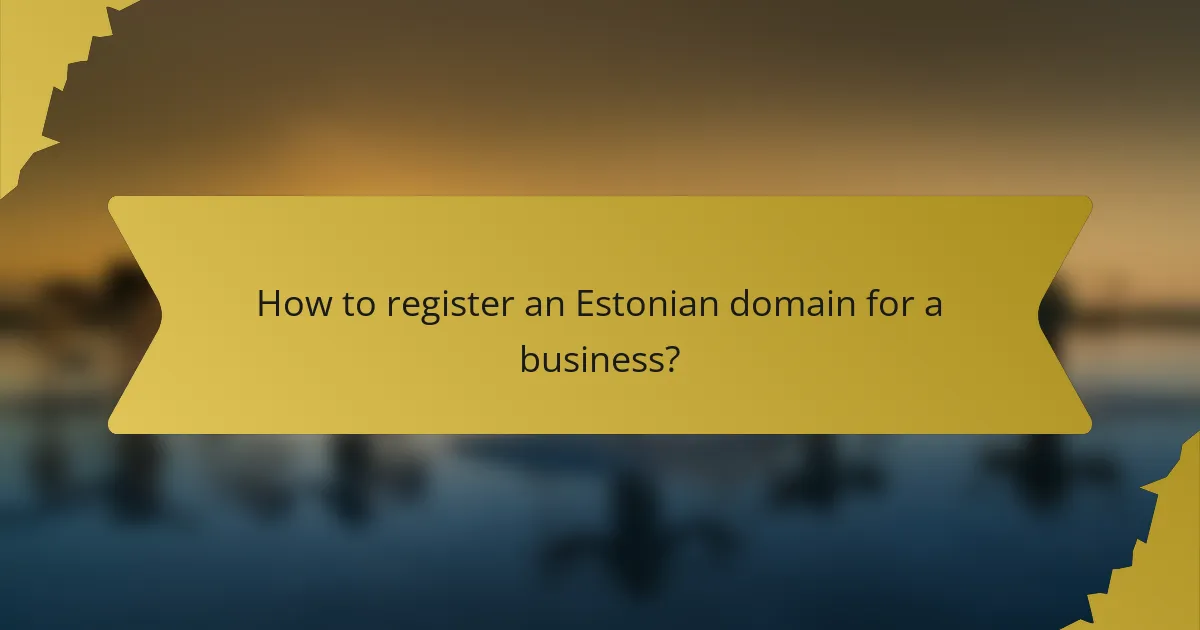
How to register an Estonian domain for a business?
Registering an Estonian domain for a business involves selecting a registrar, completing an application, submitting necessary documents, and paying a fee. This process is straightforward, typically taking a few days to complete.
Step 1: Choose a domain registrar
The first step in registering an Estonian domain is to choose a reliable domain registrar. Popular registrars include Zone, EuroDNS, and GoDaddy, each offering various services and pricing options.
When selecting a registrar, consider factors such as customer support, ease of use, and additional services like web hosting or email accounts. Compare prices and read reviews to find the best fit for your business needs.
Step 2: Complete the application form
After choosing a registrar, you will need to fill out an application form. This form typically requires basic information about your business, including its name, address, and contact details.
Ensure that all information is accurate and up to date, as discrepancies can delay the registration process. Some registrars may offer online forms that simplify this step.
Step 3: Submit required documents
Once the application form is completed, you must submit specific documents to verify your business. Commonly required documents include a business registration certificate and proof of identity for the applicant.
Check with your chosen registrar for any additional documentation they may require. Providing complete and accurate documents will help avoid delays in the registration process.
Step 4: Pay the registration fee
The final step is to pay the registration fee, which can vary depending on the domain extension and registrar. Typically, fees range from €10 to €50 per year for .ee domains.
Payment methods may include credit cards, bank transfers, or online payment systems. Make sure to keep a record of your payment for future reference and renewal reminders.
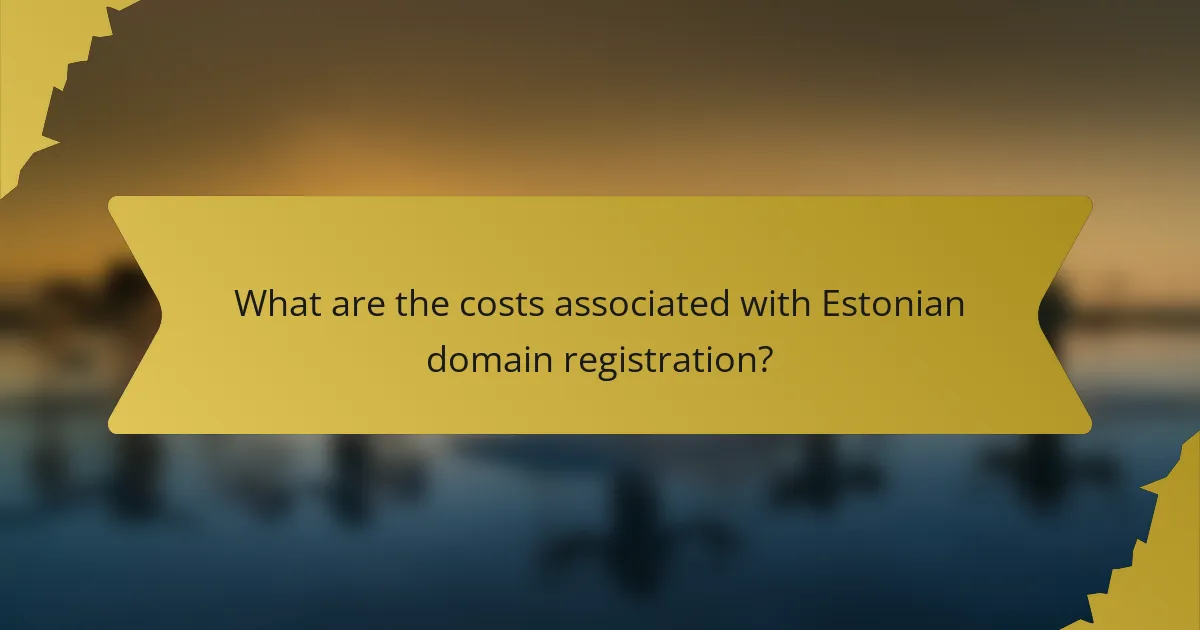
What are the costs associated with Estonian domain registration?
The costs for registering an Estonian domain can vary based on the domain extension and the registrar you choose. Generally, businesses should expect to pay registration fees, renewal costs, and potentially additional fees for privacy protection services.
Registration fees for .ee domains
Registration fees for .ee domains typically range from approximately €10 to €30 per year, depending on the registrar. Some registrars may offer promotional rates for the first year, so it’s advisable to compare options before committing.
When selecting a registrar, consider their reputation and customer service, as these factors can impact your experience during the registration process.
Renewal costs for Estonian domains
Renewal costs for .ee domains are generally similar to initial registration fees, often falling within the same €10 to €30 range annually. It’s important to keep track of renewal dates to avoid losing your domain.
Some registrars offer multi-year renewal options, which can provide a slight discount and ensure your domain remains registered without interruption.
Additional costs for privacy protection
Many registrars offer privacy protection services to keep your personal information confidential, typically costing between €5 and €15 per year. This service can help shield your contact details from public databases.
When considering privacy protection, evaluate the level of anonymity provided and whether it meets your business needs, as some registrars may have different policies regarding data disclosure.
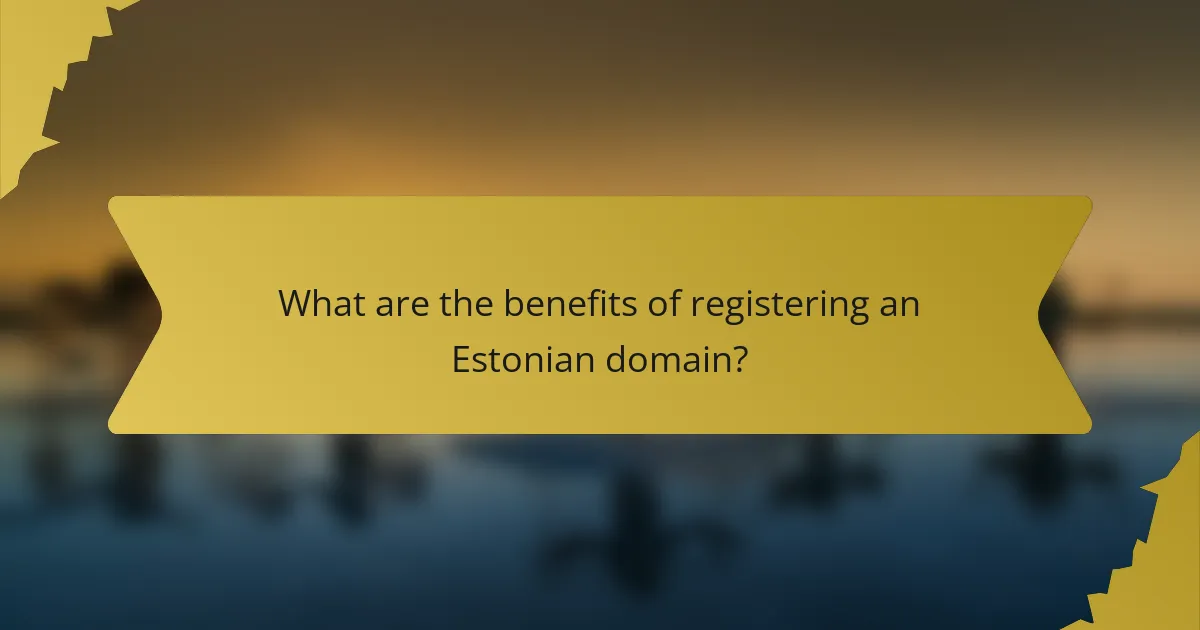
What are the benefits of registering an Estonian domain?
Registering an Estonian domain offers businesses significant advantages, including access to the European market, enhanced credibility, and improved search engine optimization (SEO) for local searches. These benefits can help businesses establish a strong online presence and attract more customers.
Access to the European market
An Estonian domain allows businesses to tap into the European market more effectively. Estonia’s membership in the European Union provides companies with the ability to operate seamlessly across EU borders, facilitating trade and collaboration.
Additionally, having a local domain can increase trust among European customers, as it signals a commitment to the region. This can be particularly beneficial for e-commerce businesses looking to expand their reach within Europe.
Enhanced credibility for businesses
Using an Estonian domain can significantly enhance a business’s credibility. Customers often perceive local domains as more trustworthy, which can lead to higher conversion rates and customer loyalty.
Moreover, a local domain can help businesses stand out in a competitive landscape. It indicates a local presence and a commitment to serving the Estonian market, which can be a deciding factor for potential clients.
SEO advantages for local search
Estonian domains can provide SEO benefits for businesses targeting local customers. Search engines tend to prioritize local domains in search results, making it easier for potential customers to find relevant services and products.
To maximize these SEO advantages, businesses should consider optimizing their website content with local keywords and engaging in local link-building strategies. This approach can significantly improve visibility in search results, driving more traffic to their websites.
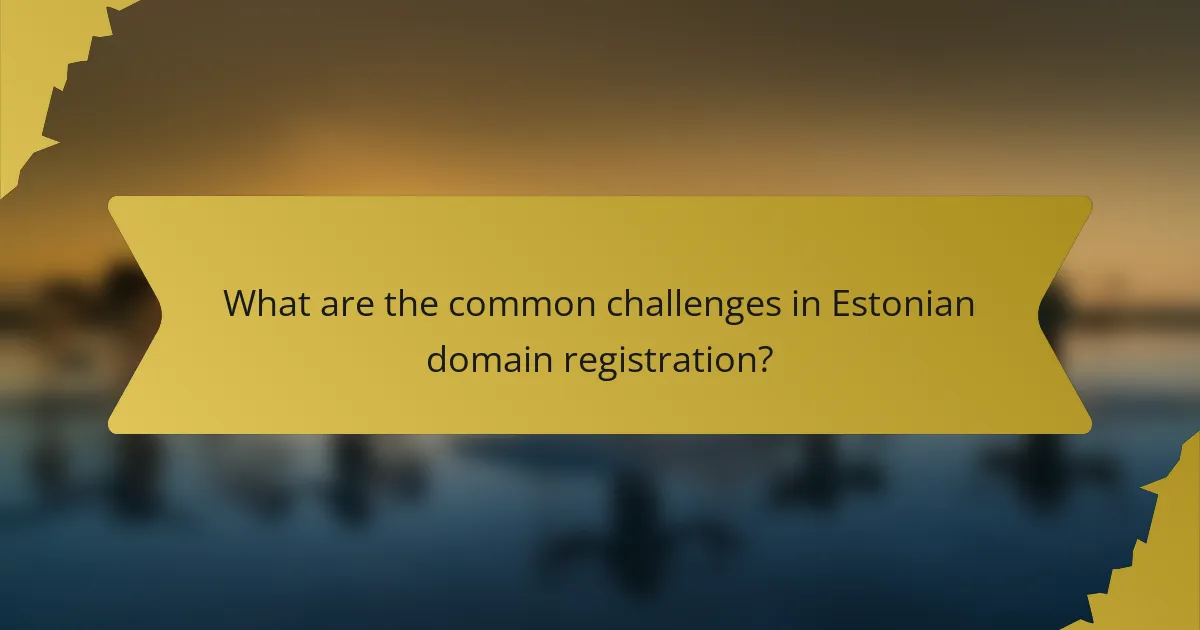
What are the common challenges in Estonian domain registration?
Estonian domain registration can present several challenges for businesses, including compliance with local regulations, understanding the registration process, and managing domain disputes. Companies must navigate specific requirements and potential pitfalls to successfully secure their desired domain names.
Understanding local regulations
Businesses must familiarize themselves with the local regulations governing domain registration in Estonia. This includes knowing the requirements for eligibility, such as having a local presence or a registered business in Estonia. Failure to comply with these regulations can lead to rejected applications or loss of domain rights.
Choosing the right domain name
Selecting an appropriate domain name is crucial for branding and online presence. Businesses should consider factors like relevance, memorability, and SEO potential when choosing a name. Additionally, checking for existing trademarks or similar domain names can help avoid legal disputes later.
Navigating the registration process
The registration process for Estonian domains typically involves submitting an application through an accredited registrar. Businesses should prepare necessary documentation, such as proof of identity and business registration. It’s advisable to allow several days for processing and to follow up if confirmation is not received promptly.
Managing domain disputes
Domain disputes can arise if another party claims rights to a similar name. Businesses should be proactive in monitoring their domain and be prepared to defend their rights if necessary. Understanding the dispute resolution policies in Estonia can help businesses navigate these challenges effectively.
